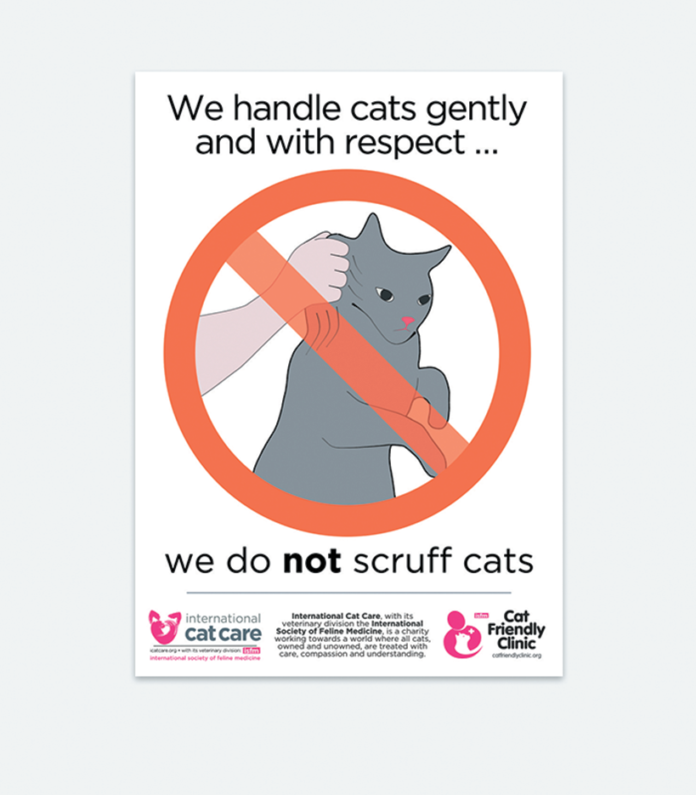A cat who is a new mother may sometimes gently carry one of her kittens by the scruff of the neck to move him to safety — perhaps back to the “nest.” For that reason, some people who handle cats, including people who work in veterinary offices, assume it’s okay to carry an adult cat that way if the cat is ornery, as it shuts down his ability to scratch and bite. It’s not.
One reason is that an adult cat is too big to be safely supported just by holding his neck. Just as important, research has indicated that an adult cat who is “scruffed” feels extremely stressed with increased anxiety and fear. In fact, scruffing is counterproductive because it makes a cat who is already feeling anxious only more likely to try to scratch and bite in self-defense, says International Cat Care (icatcare.org). The same is true for cats who are completely immobilized by full-body restraint, where the animal’s back is held against the person while she grabs his front and back legs and holds her forearm across his neck.
International Cat Care, along with research results from various studies, says that the right way to hold a cat who is feeling stressed or threatened is counterintuitive. It should be done with the least restraint possible because that will reduce a cat’s all-out effort to free himself in order to remain in charge of his own body. In other words, less is more in these situations. Professionals call it “passive restraint.”
It involves holding a cat in a position of his own choosing and allowing him to move his head, body, and limbs. Sometimes towel-wrapping and even just wearing heavy gloves can do the trick when holding a cat who is feeling a loss of control. These methods are certainly more respectful of the cat’s feelings.
In support of this gentler approach, International Cat Care has a scruff-free campaign, urging cat handlers to take a pledge not to use scruffing routinely but only as briefly as possible under the most exceptional circumstances in which real and imminent risk of harm to a person is clear. You can make that pledge to yourself, too, and also promise yourself not to use other forms of heavy restraint that overshoot the mark, serving only to make a scared cat even more nervous — and more aggressive.





I’ve always felt uncomfortable with scruffing for the cat’s sake, and am glad to know I’m not the only one. It’s good to see an effort being made to bring awareness of its counterproductivity to the professionals who are our role models, of sorts.
But–isn’t towel wrapping (AKA “The Burrito”) considered full body restraint? Or is there a different, “looser” way to wrap a cat that I’m not aware of?